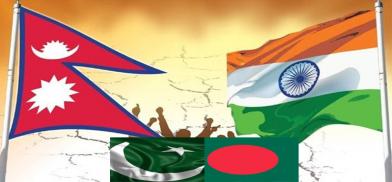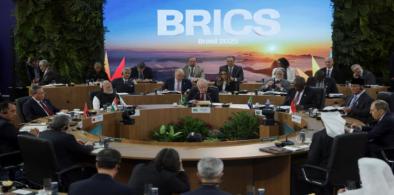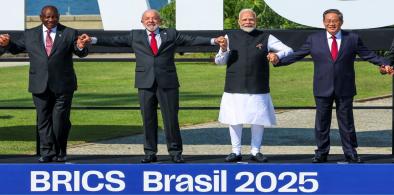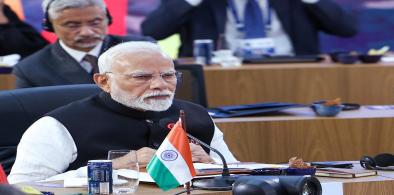Nepal can choose to go the Bangladesh way or Pakistan way in dispute settlement with India
So, there are two examples in front of Nepal now; one is Pakistan, and another Bangladesh, which one will they choose? writes Swadesh Roy for South Asia Monitor

Nepal has included a 3035 square km area on the India-Nepal border in its political map. It has claimed the areas of Lipulekh, Kalapani, and Limpiyadhura over which India has been maintaining territorial rights. Nepal’s judgment is based on its contract with the British administration in 1816. India has dismissed Nepal’s claim terming it totally baseless.
India and landlocked Nepal are close neighbours. All over the world, it is common for the two neighboring countries to have border problems. These disputes are mostly settled with negotiations, or by guns if the talks fail.
In South Asia, India and Pakistan have a territorial dispute in Jammu and Kashmir. They have fought wars, but the problem remains unresolved. On the contrary, after the creation of Bangladesh, India and Bangladesh found many land disputes existing between them that were not settled when it was part of Pakistan. In 1974, the two countries came to a Land Boundary Agreement at the prime minister’s level (by then prime ministers Indira Gandhi and Sheikh Mujibur Rahman) for ending all the disputes by handing over territories to each other. However, the implementation of this agreement needed parliamentary approval. The Bangladesh government passed it in 1974 but it was not implemented then because the Indian government could not get it through parliament. Further delays took place because of the absence of an elected government in Bangladesh for long and also the lack of good relations between these two countries.
After much political turmoil, India and Bangladesh became good friendly neighbors in 2009. But then the Indian coalition government did not have numbers in parliament to get it passed. In 2014, the Narendra Modi government got the majority. The opposition also supported the agreement in parliament that settled the border dispute peacefully. A revised version of the agreement was adopted by the two countries on May 7, 2015, when the Parliament of India passed the 100th Amendment to the Constitution of India.
One can disagree with a relative but not with a neighbor. Bad relations between neighbours hamper economic, social, cultural, and human development. Also, a third county can try and take advantage of bad bilateral ties. This has been happening in the case of India and Pakistan. If India and Pakistan had maintained good relations from 1947 they would have been able to achieve at least 30 percent more economic and social development than what they are enjoying now. Besides, many bad elements like terrorist groups get shelter in Pakistan to bleed India.
Simultaneously, religious jingoism has risen in India resulting in hate campaigns against Pakistan. Besides, India’s economic rival China has got an upper hand in Pakistan. China not only has a stronghold over Pakistan’s economy, but it has also established its control over Pakistan's armed forces by running a naval port and having a presence in Shaksgam valley in Pakistani Kashmir.
Bangladesh or Pakistan model
So, there are two examples in front of Nepal now: one is Pakistan, and another Bangladesh. Which one will they choose? If they go the Bangladesh way, they have to go for negotiation with India for solving the border dispute. This route may take time, but their future relations will not be hampered. As a neighbor, they can enjoy all the friendly facilities from each other and continue the negotiations. If they follow the Pakistan model, it will give an upper hand to China.
It is a fact that anti-Indian sentiment has risen in Nepal. Four years ago when I visited a Southeast Asian country to attend a conference that was joined by many diplomats and strategists from different countries. I got a chance to talk to some young Nepali diplomats. In that conversation, they expressed their praise for China and anger against India. As a journalist of India’s close neighbor and a small country, this sentiment is very common to me. It is one of the common failures of India that they could are not able to address or reverse anti-Indian sentiments in their neighboring countries. The same anti-Indian sentiment I have seen in the Maldives and Sri Lanka. India needs to ponder as to why it has not been able to win the hearts of the people in their neighbouring countries.
China is systemically persecuting the Uyghur Muslims but none of the maulanas (Islamic clerics) from Pakistan, Bangladesh, and the Maldives have uttered a word against Beijing. But they all are concerned about Indian Muslims. Why? India needs to ponder over this too.
Onus on Nepal PM
Now the question is that will Nepal Prime Minister K.P. Oli go for negotiation with India or ride on some anti-India sentiments of his country against India? The people who are anti-India in Nepal have a soft corner for China, So it all depends on the Nepal prime minister whether he will leverage on anti-Indian sentiments or pro-Chinese sentiments to take decisions on solving their sovereignty dispute.
It is not clear yet if China is helping Nepal or not. And it is not certain what will happen between Nepal and India, or Nepal and China, in the future. But now is the time for Nepal is to analyze the character of its two neighbors - China and India. They need to analyze only two or three incidents from past history.
In 1971, India helped Bangladeshi freedom fighters. Bangladeshi freedom fighters along with the Indian conventional army defeated the Pakistani Army and Bangladesh got freedom. After defeating the Pakistani Army, Indian Army stayed in Bangladesh only six to seven weeks. India is the only country that withdrew its army from another’s land as soon as possible. Not only did the Indian army occupy huge areas on the western side of Pakistan but they also retreated on their own will. They didn’t occupy an inch of Pakistani land in the western front. Besides, India sent their army in Sri Lanka for peacekeeping in the Tamil crisis in 1987 but they withdrew soldiers in 1990. In 1988, Indian Army paratroopers landed in the Maldives to save their President Abdul Gayoom from a military coup d’état. But Indian soldiers returned as soon as their mission was over.
On the other hand, Nepal can recall the history of Tibet. In 1950, the People Liberation Army (PLA) of China entered Tibet. After this 1.2 million Tibetans sacrificed their lives and they are still fighting for their freedom and dignity. And now Tibet is Chinese territory. Some analysts are saying that Nepal is acting tough against India because they have China’s implicit backing. But what is the price Nepal will have to pay to get this support from China? It is time Kathmandu seriously re-thinks its India policy.
(The writer is a Dhaka-based editor. The views expressed are personal. He can be contacted at swadeshroy@gmail.com)




















Post a Comment